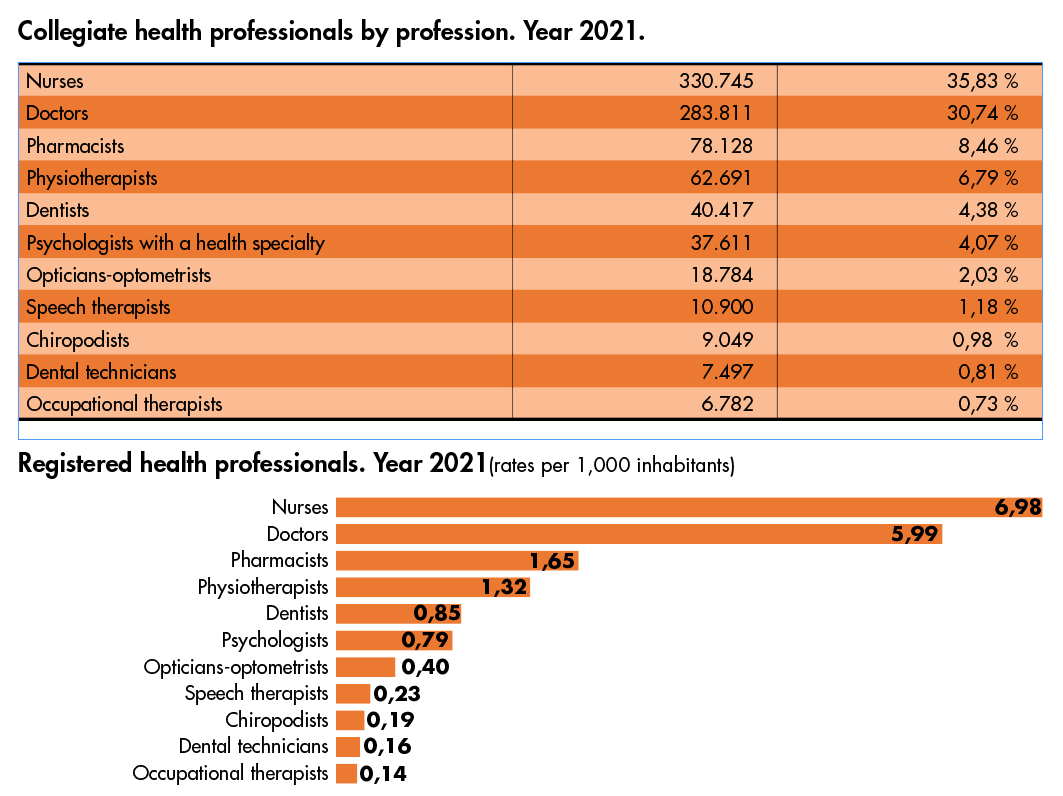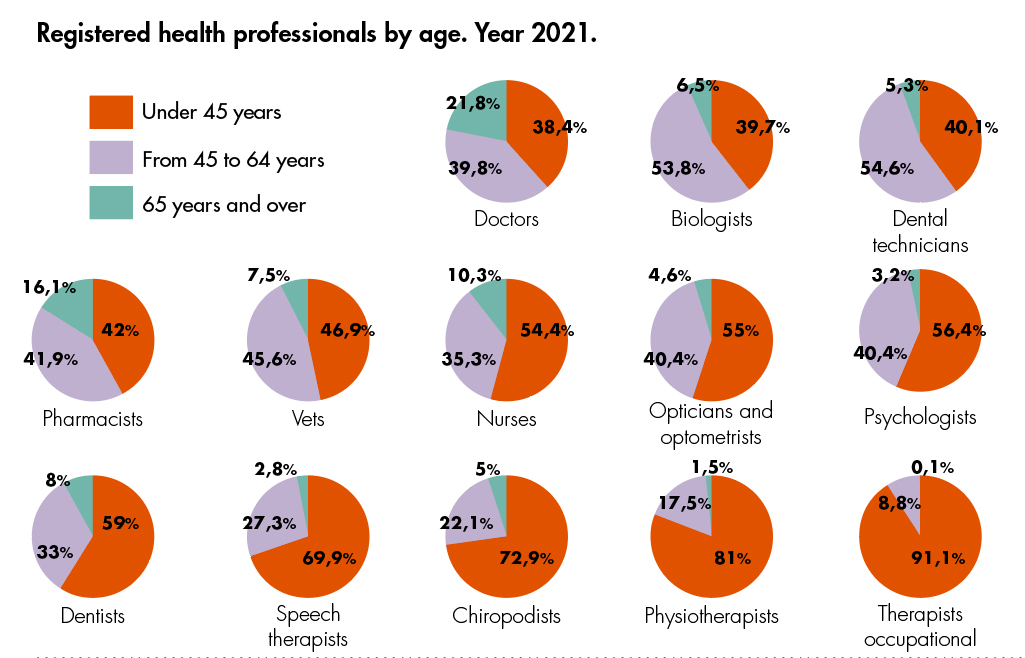
What will future health workers be like?
Personalisation, specialisation, cooperation, artificial intelligence… These are some of the concepts that appear in analysts’ predictions. Let us X-ray the sector, looking for answers.
The health care profession is evolving at great speed, in line with the changes that are occurring in different areas of society. Health care professionals have been witnesses and have played leading roles in the development of diagnosis methods, treatments and technological advances in recent decades. A changing scenario that affects different generations of professionals. Faced with this uncertain backdrop, can we see what future health care professionals will be like?
A good tool for making a prediction of how future health care professionals will work consists of seeing how they are developing their work today and the challenges they are facing. This X-ray of today’s health care sector has been made using the latest data published by the Spanish National Statistics Institute (INE). According to this independent organism, the number of registered health care professionals in Spain reached 923,207 in 2021; 2.8% more than in the previous year.
The data also shows the prevalence of women in the profession with 633,941 women compared to 289,266 men. In 2021, there were more women registered than men in 13 of the 15 professions analysed. The groups with the highest percentage of women were: speech therapists (93.5% were women), occupational therapists (90.4%) and nursing (84.2%).

Therefore, a first conclusion that we can reach is that in the near future most health care professionals will be women. Specifically, 70% of new doctors are women, which is a new development compared to previous generations. Both in the practical field and in the research area, female prevalence could bring new methodologies and leadership methods to the sector.
If we analyse data from the INE report in detail, we can see that within the group of health care professionals, the largest group is of nurses (330,745, making up 35.83% of the total), followed by doctors (283,811 – meaning 30.74% of the total) and that of pharmacists (78,128, with 8.46% of the total). If we compare this data with figures from the previous year, we see that in 2021, 7,619 new doctors, 5,727 new nurses and 1,307 new pharmacists were registered.
It is significant to observe that the largest increase in professionals compared to previous data occurred in biologists specialising in health care (625, a 16.6% rate of change compared to 2020), occupational therapists (6,782, a 15,5% rate of change compared to 2020) and chiropodists (9,049, a 9.9% rate of change compared to 2020).

Another interesting piece of information offered by the INE is the proportion of registered health care professionals by age. The largest percentages of health care professionals under the age of 45 years are found in occupational therapists (91.1%), physiotherapists (81.0%) and chiropodists (72.9%). On the other hand, the health care profession with the lowest rate for people under the age of 45 years is medicine. What is more, this group includes the highest percentage of professionals over the age of 60 years (21.8%).



